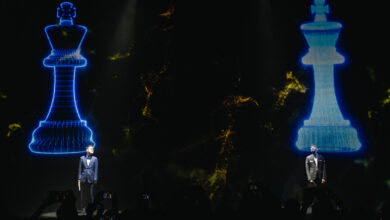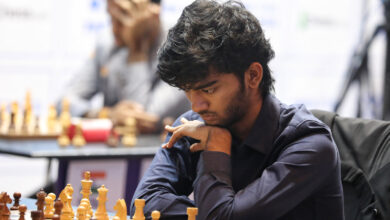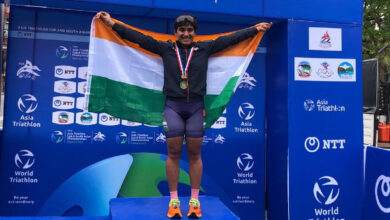Asian Games: How Manipur’s silver-medall Roshibina Devi Naorem fell in love with wushu | Asian-games News

Roshibina Devi Naorem claimed a silver medal at the Asian Games for India in wushu on Thursday, there improving on her bronze medal from the Jakarta Asian Games five years back.The 22-year-old lost in the women’s 60kg final to home favourite Xiaowei Wu. Roshibina lost both the rounds identical 5-0 margins on the judges’ cards.
“Everybody makes makes. Winning and losing is a part of it. I gave my best but I couldn’t do it (winning the gold medal), but the next time I will improve on my makes and come back better the next time,” she said after the final.
It was India’s 23rd medal at the ongoing Hangzhou Asian Games and the first from the discipline of wushu.
Follow our liveblog of Day 5 of the Asian Games
Roshibina hails from a place called Bishnupur in Manipur. The daughter of a farmer, says she fell in love with the sport very early on.
“There’s a good culture of wushu in Manipur in India. I fell in love with wushu when I saw it for the first time during a drict competition. That’s when I wanted to pick it up. I knew boxing and used to try it but I liked wushu more,” she had said before the final.
Roshibina, who competes in the 60-kg category in the sanda discipline, made a name for herself winning a bronze medal at the Junior Worlds in 2016.
Two years later, she was representing India at the 2018 Asian Games in Jakarta. That time too, she had lost to a Chinese opponent Cai Yingying.
“I was at the previous Asian Games (at Jakarta-Palembang 2018) where I won the bronze medal. But I was not able to travel to competitions after that due to the COVID-19 situation,” she added.
What is sanda and how does wushu work?
There are two disciplines in wushu: sanda, which is a combat discipline that incorporates elements of boxing, kickboxing, wrestling, and grappling. The competitor that wins two of the three rounds is declared the winner of the bout.
The other discipline in wushu is taolu, where athlete perform choreographed sequence of moves or forms according to the principles of attack and defence. The goal is to demonstrate a competitor’s skill, power, flexibility, and speed while incorporating a required l of techniques. The competitor who scores the highest number of points is declared the winner.Most Read
1
Watch this Space: Chandrayaan-3 sleeps as US Space Force punches a hole in atmosphere
2
IAS officer, transferred over stadium row, now compulsorily retired Govt
See More
Essentially, while in sanda, you compete against an opponent, in taolu, you’re fighting imaginary opponents.
The gear that athletes sport in both disciplines is also wildly different. The uniform for sanda competition is sanda short and vest for men, and sanda shorts and t-shirt for women. The shorts and vest will be of the same colour, namely red or blue. Protective gear athletes wear includes headgear, gloves, and chest protector. Competitors are wear gum guards, groin cups and hand wraps.
Taolu athletes, meanwhile, sport sequined and bedecked clothes in flashy colours.







